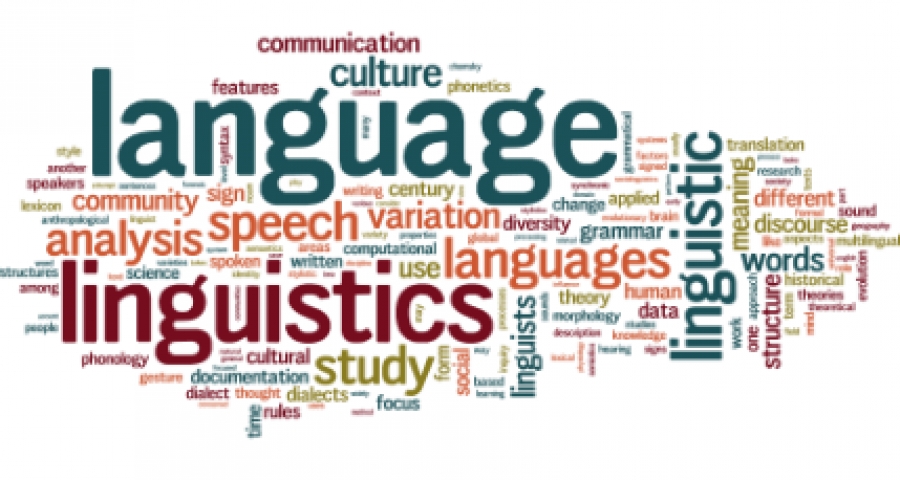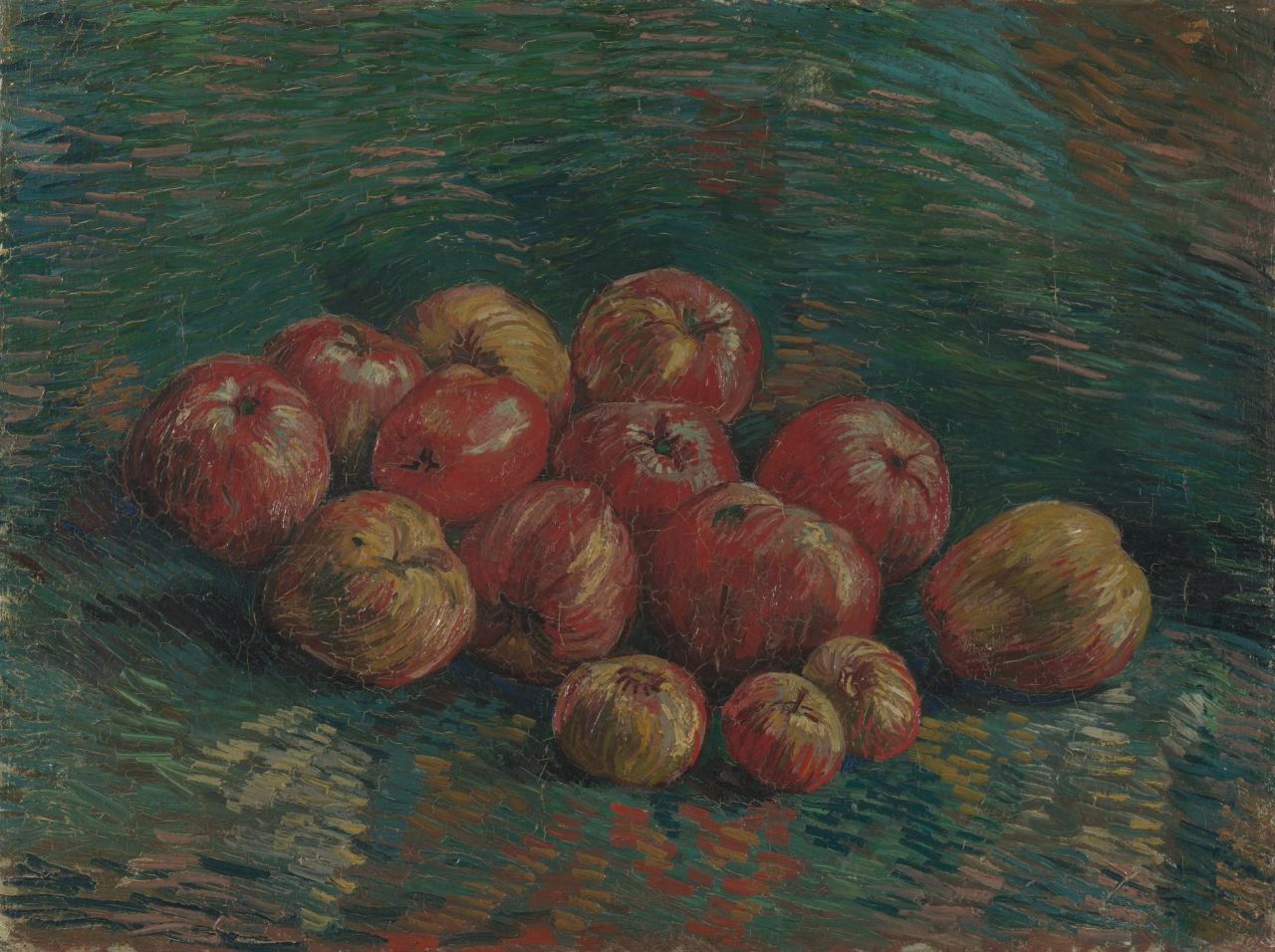Course : Introduction to Linguistics II (Εαρ. 2024-'25) - Sections Α-Καρ & Π-Ω
Course code : ENL588
63ΓΥ03 - Άννα Πιατά
Course Description

Course description
The aim of this course is to familiarize students with issues pertaining to the study of linguistic meaning, in particular the semantic, pragmatic, and textual parameters that are involved in the production and understanding of language, while also considering the role of regional, social, and cultural dimensions. Drawing on semantics, pragmatics, text linguistics/discourse analysis, and sociolinguistics, we will address the key concepts that form the backbone in the study of meaning across the board.
Upon successful completion of the course students are expected to:
- acquire basic concepts pertaining to the study of linguistic meaning;
- apply such concepts to the analysis of linguistic examples;
- associate the study of language with contextual parameters (pragmatic, textual, regional, and social);
- reflect on how society and culture impact on the production and understanding of language.
-
Bibliography
Yule, George (2010). The Study of Language. 4th edition. Cambridge: Cambridge University Press. [chapters 9, 10, 11, 17, 18, and 19]
Dirven, René & Marjolijn Verspoor (2004). Cognitive Exploration of Language and Linguistics. 2nd edition. Amsterdam: John Benjamins. [extracts from chapters 2, 7, 8 and 9]
Instructional Methods
The course is offered in the form of lectures, which are uploaded on e-class together with other learning materials, including articles and book chapters, online resources, and formative coursework. Students are expected to actively participate through in-class discussions and workshop-style group work during class meetings. Classes will include take-home assignments in order to facilitate, and monitor, students’ understanding of the topics discussed in class.
Assessment Methods
Students will be assessed on the basis of an end-of-term exam.
Course Syllabus
Week 1
Introduction to the course.
The study of meaning, comprising semantic, pragmatic, textual, regional, and social dimensions.
Week 2
Semantics I.
Semantic features.
Semantic/thematic roles.
Words, meanings, and concepts.
Week 3
Semantics II.
Lexical relations.
Synonymy, antonymy. Collocations.
Week 4
Semantics III.
Homonymy vs polysemy.
Metaphor and metonymy.
Week 5
Pragmatics I.
Context.
Deixis and reference.
Presupposition.
Week 6
Pragmatics II.
Speech acts. Direct and indirect speech acts.
Week 7
Pragmatics III.
Politeness.
Face-threatening acts and politeness strategies.
Week 8
Pragmatics IV.
Conversational implicature.
The Cooperative principle and the maxims of conversation.
Week 9
Text linguistics-Discourse analysis I.
Cohesion and coherence.
Week 10
Text linguistics-Discourse analysis II.
Conversation analysis and turn-taking.
Week 11
Sociolinguistics I.
Regional variation.
The standard language. The dialect continuum.
Bilingualism and diglossia. Pidgins and creoles.
Week 12
Sociolinguistics II.
Social variation.
Social dialects, register, and slang.
Prestige. Speech accommodation.
Week 13
Wrap up class and exam preparation.
Please note that this course outline is tentative, hence subject to change.

The first day of classes was dedicated to introducing the aims and the content of this course. We thus outlined the different areas of linguistics that we will cover throughout the semester, namely semantics, pragmatics, discourse analysis, and sociolinguistics, as well as the key concepts we will discuss under each course unit. This journey starts with the study of word meaning through the lens of lexical semantics. We specifically addressed the question as to how we can define word meaning, and the various challenges that are entailed in the so-called "dictionary" definition of word meaning. Finally, we established a distinction between conceptual and associative meaning; for the purposes of this course, we will focus specifically on conceptual meaning.
More on word meaning in tomorrow's class. Please bring with you a copy of the Handout on semantic features and semantic roles that is found in Documents under the folder "Handouts".

In this class, we focused on the analysis of word meaning in terms of semantic features and semantic roles. We specifically analyzed word meaning in terms of a small set of semantic features, which help us define, at least partly, the meaning of certain words, as well as how words cluster to form semantic classes but also differ (cf. "woman" and "girl"). This helps us also explain the oddity of certain linguistic expressions, such as "?The apple ate the hay". Moreover, we analyzed words in terms of the semantic, or thematic roles they fulfill in a sentence. Such roles include: agent and theme, instrument, experiencer, location, source, and goal. Semantic roles are assigned primarily by verbs, as well as by prepositions.
Please study the lecture slides and the relevant pages from Yule's chapter 9 (pp. 112-116). For next time, please do the following exersices from Handout 1 on Semantics: 3, 8, 9, 10. You need to also bring with you Handout 2 that is available in the relevant folder under Documents.

In this class, we first discussed your homework on semantic features and semantic roles.
Next, we shifted our focus to polysemy, namely words that have two (or more) meanings that are different but related. Specifically, we distinguished polysemous words from homonyms, which have identical forms but their meanings are different and unrelated, as well as from homophones, which overlap phonologically although they differ in terms of spelling and meaning.
In order to analyze polysemy, we introduced the notion of prototypicality that helps us explain how polysemous words have one central meaning, which we call "prototypical". From this prototypical meaning all other senses of polysemous words are derived; these are the so-called "extended senses". Two mechanisms are involved in semantic extension, namely metonymy and metaphor.
Please study the lecture slides and the relevant pages from Yule's chapter on Semantics. For our next class, please prepare Exercises 5, 6 and 7 from the Handout on polysemy.

The last part of semantics is concerned with how the meaning of words relates to the meaning of other words in the mental lexicon, that is, lexical relations. Lexical relations include synonymy, antonymy, and hyponymy, the latter forming hierarchical taxonomies of hypernyms and hyponyms. Part of our knowledge of word meaning is how words are combined with other words in the form of collocations. With lexical relations we have now completed the study of word meaning in semantics. The exercises on lexical relations are found in Handout 3.
Please study the lecture slides and the relevant pages from Yule's chapter on Semantics.
For next time, please prepare the Self-assessment test on Semantics that you will find under Documents and bring with you Handout 1 on Pragmatics (Deixis & Presupposition).

After completing our overview of semantics, we shifted our focus to pragmatics. The object of study in pragmatics is so-called "utterance meaning", which, as opposed to "semantic meaning", depends on the context (both linguistic and physical, i.e. extra-linguistic), and the communicative intention of the speaker. Τhe notion of context is central to pragmatics. In particular, we discussed how the physical context of an utterance modulates the meaning of so-called "deictic expressions", including person, space, and time deixis.
The second part is concerned with presupposition, namely a precondition that is required for a sentence to be true as in, e.g., "Mary stopped smoking"; this presupposes that Mary used to smoke. We specifically examined how syntactic and lexical forms, so-called "presupposition triggers", serve to give rise to presuppositions (such as the verb "stop" in the example above). We also discussed an instance of presupposition found in a political slogan ("Make America great again!") and serving as a means to implicitly get across a message of lost grandeur which therefore must be restored. Finally, we did in class all the exercises that are contained in Handout 1 in Pragmatics.
Please study the lecture slides and the relevant pages from Yule's chapter on Pragmatics. Next time, please bring with you Handout 2 in Pragmatics (on speech acts & politeness).
I wish you all a lovely Easter break! Καλό Πάσχα!

In this class, we shifted our focus to speech acts with which speakers perform actions through the use of language; e.g. "Can you open the window?". In line with speech act theory, we established a distinction between direct and indirect speech acts, and noted that for a speech act to be felicitous, that is, successful, the speech act needs to be performed properly (see the example on the invalid baptisms). Finally, a hearer may fail to recognize a speech and this is likely to provoke a communication breakdown (see the example from the film "The Imitation Game"). We did all exercises on speech acts from the second handout in Pragmatics.
The analysis of speech acts extends to politeness, approached through the lens of pragmatics. To this end, we introduced the notion of "face" and suggested that some speech acts may engender a threat on the hearer's face. In order to save face and thus ensure social harmony, speakers make linguistic choices that attend to the hearer's positive and negative face. These are known as "positive" and "negative politeness strategies", intended, respectively, to appeal to the common ground between speaker and hearer and to respect the hearer's freedom from imposition and. Finally, we addressed cross-cultural variation vis-à-vis face management. We did in class all exercises from Handout 2 in Pragmatics.
For more detail, please study the lecture slides as well as the relevant pages from Yule.

In this class, we established the concept of "implicature", introduced by the philosopher H. P. Grice. Implicatures refer to meanings that are additional to, or different from, the literal meaning of a sentence, i.e. what is said. In order to explain how hearers understand implicatures, Grice posited the Cooperative principle and the maxims of conversation. Implicatures can be derived in two distinct ways; either through observing the maxims or by flouting them. But even when they are flouted, however, hearers are still able to derive the meaning intended by the speaker because of the Cooperative principle.
For more detail time, please study the lecture slides and the relevant readings.

In this class, first we discussed the answers to the self-assessment test on pragmatics.
Then, we moved to another domain of linguistic inquiry, so-called text linguistics (TL) or discourse analysis (DA), which is concerned with the analysis of text and conversation, that is, language beyond the level of the sentence.
We specifically focused on the distinction between cohesion and coherence. A text is coherent if it is possible to construct a coherent representation of that text. In contrast, cohesion refers to the explicit marking of the relations between the parts of the text. The coherence of a text can be signalled through cohesive links.
Specifically, coherence can be established in one of two ways: a) by repeated reference to the same referents in a text, called "referential coherence", and b) by linking text parts with coherence relations like cause-consequence and contrast, called "relational coherence". We analyzed both types of coherence, as well as the linguistic devices used for this purpose.
For more detail, please study the lecture slides and the relevant pages from Yule (p. 143-145) and Dirven & Verspoor (p. 184-191).
For next week, please prepare exercises 5 and 7 from the Handout on TL/DA.

In this class, we approached language through the lens of sociolinguistics, namely the branch of linguistics that studies how social, geographical, cultural, and personal factors influence the use of language.
We specifically focused on regional variation, which depends on the geographical area in which a variety is spoken. We thus established a distinction between the standard language and regional dialects, while acknowledging that all language varieties are of equal status. Regional variation applies to all levels of language, with pronunciation in the form of accent being the most prominent.
Related to dialects are the following notions: dialect atlas, isogloss, dialect boundary, and dialect continuum. Finally, we discussed linguistic varieties that result from language contact, namely pidgins, which may eventually develop into creoles.
For more detail please study the lectures slides and chapter 18 from Yule. For next time, please prepare exercises 6 and 7 from the Handout attached.

This lecture was dedicated to second part of sociolinguistics, which is concerned with language and social variation; so-called social dialects (or sociolects). The gist of this approach is that people often use language to signal their membership in a particular social group. Social variables that modulate how we speak include social status, gender, age, ethnicity, and education. While regional dialects differ according to the geographical area the speakers come from, social dialects are distinguished according to the speakers' social group. In short, people who belong to different social groups speak different social dialects. We also discussed some notions that are central to sociolinguistic research, such as overt and covert prestige; style and register; slang and vernacular, with a particular focus on African American Vernacular English (AAVE).
For more detail please study the lectures slides as well as Yule's chapter 19.
![]() Our last class was dedicated to revisions and preparation for the final exam. For this purpose we discussed in class a past exam as well as any questions you had on the content of this course and the final assessment.
Our last class was dedicated to revisions and preparation for the final exam. For this purpose we discussed in class a past exam as well as any questions you had on the content of this course and the final assessment.
Good luck with the final exam! :)
Agenda
Announcements
ALL ANNOUNCEMENTS...-
Wednesday, December 10, 2025, 9:30 PM
-
Wednesday, December 3, 2025, 4:38 PM
-
Friday, November 14, 2025, 12:01 PM